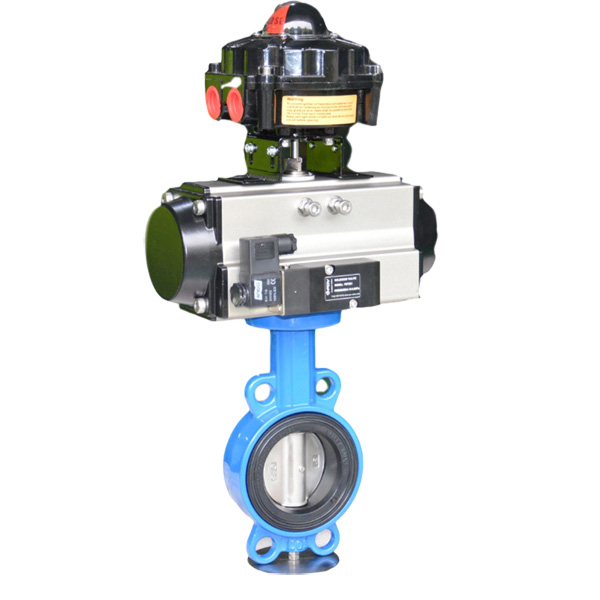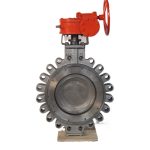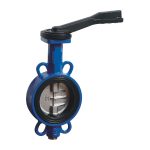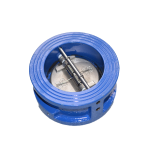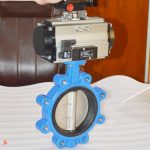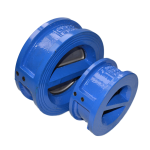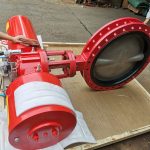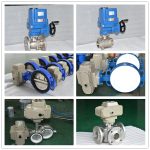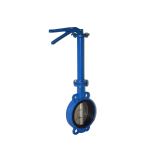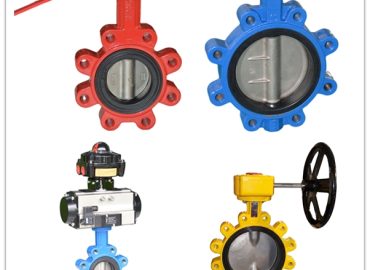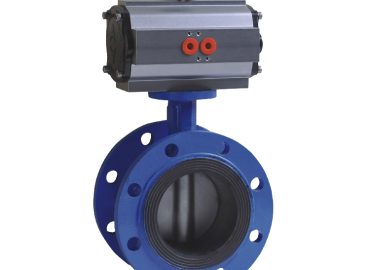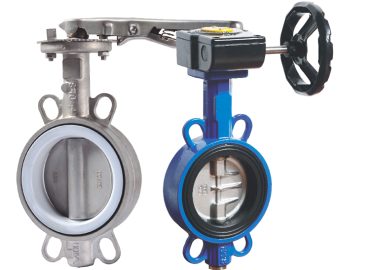In the complex world of fluid control systems, valves play a pivotal role. They come in many forms, each designed to meet specific requirements and applications. Among these, wafer and butterfly valves are widely used, but often confused due to their similarities. This article aims to demystify the differences between these two types of valves, offering insights into their unique design features, how they operate, and where they’re typically applied. By understanding these differences, you can make an informed decision on which valve is best suited for your specific needs and applications.
Introduction
Understanding the nuances between different types of valves is crucial in fluid control systems, especially when it comes to wafer and butterfly valves. Both are popular choices in a wide array of industries, thanks to their compact design and efficient performance. However, they are not interchangeable and understanding their differences can greatly impact the efficiency and longevity of your system. A wafer valve, often a type of butterfly valve, is known for its compact, lightweight design. It’s designed to maintain a seal against bi-directional pressure differential to prevent backflow in systems. This makes them ideal for systems where space and weight are at a premium. On the other hand, butterfly valves, which come in both lug and wafer styles, are recognized for their simple yet robust design. These valves use a disc mounted on a rotating shaft to control fluid flow and are particularly useful in larger, more complex systems due to their durability and ability to manage high-pressure differentials. The choice between a wafer valve and a butterfly valve ultimately depends on the specific requirements of your system, including factors like the system’s pressure, the presence of backflow, available space, and the nature of the fluid being controlled. By understanding these fundamental differences and their applications, you can optimize your system’s performance and enhance its operational lifespan.
Understanding Valves
Valves are essential components in a wide range of systems, from simple household plumbing to complex industrial processes. They control the flow of fluid—be it gas, liquid, or semi-liquid slurry—by opening, closing, or partially obstructing passageways. Valves come in a myriad of designs, each tailored to fulfill specific functions and withstand different operating conditions. Some valves are manually operated with the use of a handle, lever, or pedal, while others are automatic, driven by changes in pressure, temperature, or flow. The most common types include gate valves, globe valves, ball valves, butterfly valves, and wafer valves, among others. Each valve type has its unique design, operation mechanism, and application. For instance, gate valves are commonly used to completely stop or allow flow, while globe valves are used for throttling flow. Ball valves, known for their quick turn off-and-on, are used in many high-pressure applications. Butterfly and wafer valves are appreciated for their lightweight, compact design and are often found in large-volume water pipelines and chemical plants. Understanding the basics of valves, their differences, and their applications is crucial in selecting the right valve for a specific task, ensuring optimal performance and efficiency.

Definition of a valve.
A valve is a mechanical device that regulates, directs, or controls the flow of a fluid (gases, liquids, fluidized solids, or slurries) by opening, closing, or partially obstructing various passageways. In essence, it acts as a gatekeeper, facilitating the movement of substances from one area to another, ensuring they go where they’re needed, and preventing them from going where they’re not. Valves come in many designs, each with specific functional features suited to particular pressures, temperatures, and flow control requirements. They are a vital component in numerous industries, including but not limited to oil and gas, water and sewage, chemical manufacturing, and power generation.
The role of valves in controlling flow within systems.
Valves play a crucial role in controlling the flow of fluids within a system. They function as regulators, allowing operators to manage the rate, direction, and pressure of the flow, ensuring it aligns with the requirements of the system. By opening, closing, or partially obstructing the passageways, valves can start, stop, or modulate the flow of fluids. This capacity to control flow is critical in maintaining the safety, efficiency, and functionality of a system. For instance, in a water supply system, valves prevent the backflow of water, maintaining a consistent and safe water supply. In industrial settings, valves can handle extreme pressures and temperatures, preventing potential leaks or explosions. Overall, valves provide a level of control that is indispensable in managing complex fluid systems.
Different types of valves and their common uses.
There are various types of valves, each with its unique design and purpose. Gate valves, one of the most common types, are typically used in pipelines for on-off control. They allow full flow when open and shut off flow completely when closed, making them unsuitable for regulating flow. Globe valves, on the other hand, are excellent for throttling purposes because they can be fine-tuned to adjust the flow rate. Ball valves, recognized by their spherical disc, offer quick start-stop control and are commonly used in homes and industrial applications for shut-off and control purposes. Butterfly valves, featuring a disc that rotates around a central axis, are often used in large-volume water flow systems due to their lightweight and compact design. Lastly, check valves, also known as non-return or one-way valves, prevent backflow in the system and are widely used in various fluid systems to protect equipment. Each valve type serves a distinct role, and understanding their uses is key to optimizing system performance and efficiency.
Wafer Valve
A wafer valve, often referred to as a wafer check valve, is a specific type of valve known for its compact and lightweight design. As the name suggests, this valve has a wafer-like profile, making it an ideal choice for systems where space is at a premium. The defining characteristic of a wafer valve is its ability to maintain a seal against bi-directional pressure differential, which effectively prevents any backflow in the system. This is achieved through the use of a disc or door mechanism, which swings or lifts to allow flow in one direction and seals shut when the flow tries to reverse. This automatic prevention of backflow makes wafer valves particularly useful in applications where there is a need to protect pumps and similar equipment from potential damage caused by reverse flow. Commonly found in water treatment plants, chemical processes, and HVAC systems, wafer valves are appreciated for their reliability, cost-effectiveness, and ease of installation. However, they must be installed between flanges to maintain their structure, which is a key consideration in system design.
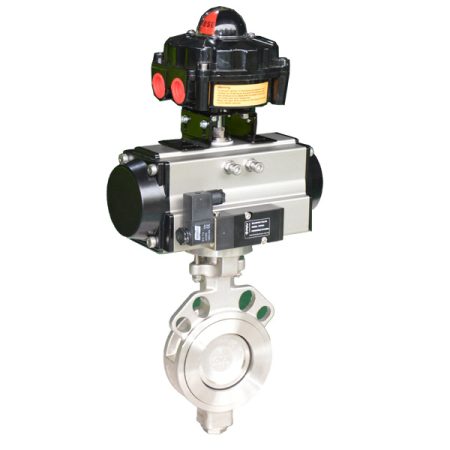
Detailed explanation of wafer valves.
Wafer valves, often seen in the form of wafer check valves or wafer butterfly valves, are mechanical devices designed to control the flow of fluids within a system. Named for their thin, wafer-like design, these valves are compact and lightweight, making them ideal for use in systems where space constraints are a factor. One primary function of a wafer valve is to maintain a seal against a bi-directional pressure differential. This means that they effectively prevent backflow by allowing fluid to flow in one direction and automatically sealing when the flow attempts to reverse. The sealing action is typically achieved through a disc or door mechanism that swings open to allow flow and closes when the pressure drops or reverses. This feature makes wafer valves particularly useful in protecting equipment like pumps from potential damage caused by reverse flow. It’s important to note that wafer valves need to be installed between flanges to ensure their stability and proper functioning. They are widely used in various industries, including water treatment, chemical processing, and HVAC systems, thanks to their reliability, cost-effectiveness, and ease of installation.
Structure and design features of wafer valves.
The structure and design of wafer valves are characterized by their thin, flat design, which gives them their name. This compact structure allows for easy installation in systems with limited space. One of the most distinctive features of a wafer valve is its disc or door mechanism, which is designed to swing or lift open when fluid pressure is applied in one direction and automatically close when the flow tries to reverse. This makes them particularly effective at preventing backflow. The sealing surfaces, or seats, of the valve can be made from various materials depending on the application, including metal, plastic, and ceramic. These materials need to be durable enough to withstand the pressure and temperature of the fluid flowing through the valve. Wafer valves are typically installed between two flanges in a piping system and held in place using bolts that pass through holes in the outer edges of the valve body. This arrangement allows the valve to maintain its structure while still providing an effective seal against bi-directional pressure. Overall, the structure and design features of wafer valves contribute to their reliability, efficiency, and ease of use in a wide range of applications.
Common materials used in the construction of wafer valves.
The construction of wafer valves involves the use of various materials, each chosen for their specific properties to ensure the valve functions optimally under different conditions. The valve body, which houses the internal components, is often made from durable metals such as stainless steel, brass, cast iron or bronze due to their strength and resistance to corrosion. The disc or door mechanism, a key component in controlling fluid flow, may also be crafted from similar metals or plastics depending on the application. The sealing surfaces, or seats, are especially critical because they must create a tight seal to prevent backflow when the valve is closed. These can be made from resilient materials like rubber, plastic, or metal, and sometimes they’re lined with softer materials like Teflon for enhanced sealing capabilities. The choice of material depends heavily on the type of fluid the valve will handle, the temperature and pressure it will be subjected to, and the level of corrosion resistance required. By using the appropriate materials, manufacturers ensure that wafer valves can deliver reliable performance in a wide range of environments and applications.
Advantages and disadvantages of wafer valves.
Wafer valves offer several advantages, making them a popular choice for various applications. Their compact and lightweight design allows for easy installation, even in systems with limited space. They provide reliable sealing against backflow, protecting equipment such as pumps from potential damage. Additionally, they are cost-effective, requiring fewer materials for construction compared to other valve types, and their simple design contributes to lower maintenance costs over time.
However, wafer valves also have certain disadvantages. One of the main drawbacks is that they must be installed between flanges, which can complicate the installation process and limit their use in certain systems. They also may not be suitable for applications requiring throttling of flow, as they are primarily designed for on-off control. Furthermore, while they can handle a range of pressures and temperatures, they may not be the best choice for extreme conditions, as the materials used in their construction could be affected. Lastly, the disc or door mechanism in some wafer valves may cause a slight pressure drop in the system, which could impact efficiency in certain applications. Understanding these pros and cons can help in selecting the right valve type for a specific application.
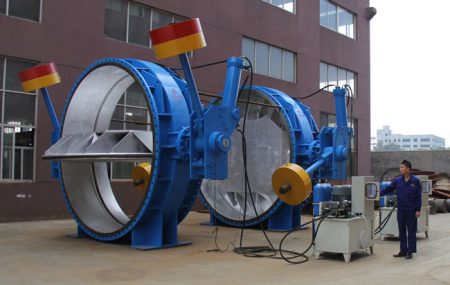
Butterfly Valve
A butterfly valve is a type of quarter-turn valve that controls the flow of fluid through a system. It gets its name from the butterfly-like disc mounted on a rotating shaft, which forms the primary component of the valve. When the valve is fully open, the disc aligns with the direction of the fluid flow and allows it to pass through. Conversely, when the valve is fully closed, the disc is rotated by 90 degrees, obstructing the flow path and stopping the fluid flow completely. This quick, 90-degree turn capability makes butterfly valves highly efficient for controlling the flow of liquids and gases in large volumes.
The construction of a butterfly valve includes the disc, the body, the seat, and the actuator. The disc is usually made of robust materials like stainless steel, cast iron, or plastic, depending on the application. The body can be a lug-style or wafer-style, the latter being lighter and more compact. The seat, which forms a seal against the disc to stop the flow, can be made from resilient materials such as rubber or high-performance plastics.
Butterfly valves are known for their durability, ease of operation, and cost-effectiveness. They require less material to construct than other valve types, resulting in a lighter, more compact design that’s easier to install and requires less support structure. Furthermore, they offer low torque, allowing for the use of smaller, less expensive actuators.
However, it’s important to note that while butterfly valves are excellent for start/stop and throttling operations, they may not provide a completely leak-tight closure, especially in high-pressure applications. Also, the disc impedes the flow even when fully open, causing a slight pressure drop. Despite these considerations, butterfly valves remain a popular choice for a wide range of applications, including water distribution, chemical services, and HVAC systems.
Detailed explanation of butterfly valves.
A butterfly valve is a type of quarter-turn rotational motion valve that is used to control the flow of liquids or gases in a piping system. The “butterfly” in the valve is a disc connected to a rod. When the valve is open, the disc rotates so that it is parallel with the direction of the flow, allowing fluid to pass through. When the valve needs to be closed, the rod rotates the disc by 90 degrees, or a quarter turn, so that it is perpendicular to the flow, effectively blocking the passage and stopping the flow of fluid. This quick on-off operation makes butterfly valves highly efficient for controlling large volumes of flow. The disc’s position can also be adjusted to regulate the flow rate, making butterfly valves useful for throttling applications as well. However, it’s worth noting that even when fully open, the disc still slightly obstructs the flow path, causing a small pressure drop. Butterfly valves are commonly used in various industries due to their simplicity, reliability, and cost-effectiveness. They are particularly prevalent in water distribution systems, chemical processing plants, and HVAC systems.

Structure and design features of butterfly valves.
Butterfly valves are designed with simplicity and efficiency in mind. The most distinguishing feature of a butterfly valve is its disc, which is mounted on a rotating shaft. The disc, often shaped like a butterfly’s wings, is the component that controls the flow of fluid. When the disc is aligned parallel to the flow, the valve is fully open, and when it’s turned a quarter turn to a position perpendicular to the flow, the valve is fully closed. The disc is connected to an actuator, which can be manually turned or powered by electricity, hydraulics, or pneumatics to control the disc’s rotation.
The body of the butterfly valve can come in different styles, the most common being the wafer and lug design. The wafer style is more compact and lighter, making it suitable for many applications where space and weight are considerations. On the other hand, the lug style has threaded inserts at both ends that allow it to be installed into a system using two sets of bolts without nuts, making it suitable for end of line applications where downstream disassembly is necessary.
The seat of the butterfly valve, which forms a seal against the disc to prevent backward flow when the valve is closed, is typically made from resilient materials like rubber or high-performance plastics. These materials allow for tight sealing and resistance against wear and tear. Overall, the structure and design features of butterfly valves contribute to their versatility, efficiency, and ease of operation.
Common materials used in the construction of butterfly valves.
The construction of butterfly valves involves the use of various materials, each chosen for their specific properties to ensure the valve functions optimally under different conditions. The body of the valve, which houses the disc and the stem, is typically made from durable metals like stainless steel, cast iron, or carbon steel. These metals are chosen for their strength, durability, and resistance to corrosion. The disc, which controls the flow of fluid, can be made from similar metals, or sometimes from a robust plastic like PVC or CPVC, depending on the application.
The stem, which connects the actuator and the disc, is often made from stainless steel or brass for its strength and corrosion resistance. The seat, which forms a seal when the valve is closed, is typically made from resilient materials like EPDM, Buna-N, or Viton. These materials are flexible yet strong, allowing them to create a tight seal against the disc. They also have good resistance to a range of chemicals and temperatures. The actuator, which controls the movement of the disc, may be made from a variety of materials, including plastic, aluminum, or steel, depending on whether it’s manual or powered. By using the appropriate materials, manufacturers ensure that butterfly valves can provide reliable performance in a wide range of environments and applications.
Advantages and disadvantages of butterfly valves.
Butterfly valves come with several advantages that make them a popular choice for many applications. They have a simple and compact design, which makes them lightweight and easy to install, even in systems where space is limited. Their quarter-turn operation allows for quick opening and closing, providing efficient control of fluid flow. Butterfly valves are also cost-effective, as they require less material for construction compared to other types of valves, reducing initial costs. Furthermore, their maintenance is relatively straightforward due to their simple construction.
However, butterfly valves also have certain disadvantages that may limit their suitability for some applications. Despite their good sealing capabilities, they may not provide an absolute zero-leakage closure, especially under high pressure or with certain types of fluids. This makes them less suitable for applications where a completely leak-tight seal is necessary. The disc, even when fully open, can obstruct the flow path to some extent, causing a slight drop in pressure. This could potentially impact system efficiency in certain applications. Lastly, while butterfly valves are excellent for controlling large volumes of flow, they may not be ideal for precise throttling over extended periods because the flow control is not linear. Therefore, careful consideration should be given to the specific requirements of an application when choosing to use a butterfly valve.
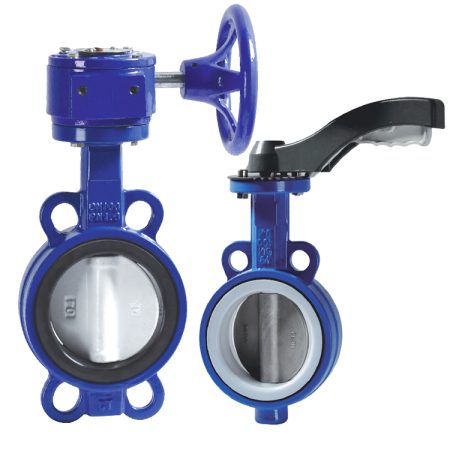
wafer valve vs butterfly valve: Understanding the Differences
Wafer and butterfly valves are both types of quarter-turn valves, which are widely used in various industrial applications due to their ability to effectively control the flow of fluids. However, there are distinct differences between the two that can influence their suitability for specific applications.
A wafer valve, often referred to as a wafer check valve, is designed to prevent backflow in a system. It has a disc or door mechanism that allows fluid to flow in one direction but closes when the fluid tries to flow in the opposite direction, preventing backflow. Wafer valves are compact and lightweight, making them suitable for systems where space is at a premium. They are also cost-effective due to their simple design and lower material requirements. However, they must be installed between flanges, which can complicate the installation process, and they are not suitable for end-of-line service.
On the other hand, a butterfly valve gets its name from the butterfly-like disc that rotates on a shaft to control the flow of fluid. When the disc is parallel to the direction of flow, the valve is open; when it’s turned 90 degrees, the valve is closed. This quick operation makes butterfly valves efficient for controlling large volumes of fluid. Butterfly valves can be either lug-style or wafer-style. Lug-style butterfly valves have threaded inserts at both ends and can be installed using two sets of bolts without nuts, allowing for end-of-line service.
In contrast, wafer-style butterfly valves are lighter and more compact, but they must be installed between two flanges and cannot be used for end-of-line service. While butterfly valves offer excellent flow control, they may not provide a completely leak-tight seal under high pressure, and the disc, even when fully open, can cause a slight pressure drop.
In conclusion, while both wafer valve vs butterfly valve have their unique advantages and potential drawbacks, the choice between the two primarily depends on the specific requirements of the application, including factors like the nature of the fluid, pressure and temperature conditions, available space, and the need for backflow prevention or end-of-line service.
Comparison of structure and design between wafer and butterfly valves.
wafer valve vs butterfly valve, while serving similar functions of controlling fluid flow, differ in their structure and design. A wafer valve, specifically a wafer check valve, has a spring-assisted disc or door mechanism that allows fluid to flow in one direction but closes to prevent backflow when the fluid tries to reverse direction. This type of valve is generally sandwiched between two flanges in a piping system using bolts that pass through the flanges and the valve. Wafer valves are appreciated for their compact and lightweight design, which makes them suitable for systems where space is a premium.
On the other hand, a butterfly valve features a disc mounted on a rotating shaft, which controls the fluid flow. When the disc is aligned with the flow, the valve is open; when it’s turned a quarter turn to a position perpendicular to the flow, the valve is closed. The disc is connected to an actuator, which can be manually operated or powered by electricity, hydraulics, or pneumatics. Butterfly valves can be either wafer-style or lug-style. The wafer-style butterfly valve, like the wafer check valve, is installed between two flanges. However, the lug-style butterfly valve has threaded inserts at both ends and can be installed using two sets of bolts without nuts, allowing it to be used for end-of-line service. This also means it can be removed from a system without needing to disrupt the entire line, which is not the case with wafer-style valves. Both types of butterfly valves are known for their quick operation, efficiency, and cost-effectiveness.
Key differences in performance, durability, and cost.
When comparing the performance, durability, and cost of wafer valve vs butterfly valve, several key differences emerge. In terms of performance, both valves are designed to control fluid flow effectively, but they do so in different ways. Wafer valves, specifically wafer check valves, excel at preventing backflow, which is crucial in systems where reverse flow could cause damage or contamination. Butterfly valves, on the other hand, are excellent for controlling large volumes of fluid quickly and efficiently, but they may not offer the same level of backflow prevention.
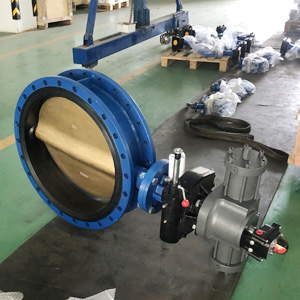
In terms of durability, the materials used in the construction of these valves play a significant role. Both types of valves are typically made from robust materials like stainless steel or cast iron, ensuring long-term durability. However, the resilience of the sealing material, usually rubber or a high-performance plastic, can also affect the valve’s lifespan, especially in applications involving corrosive or high-temperature fluids.
When it comes to cost, wafer valves tend to be more cost-effective due to their simpler design and lower material requirements. They’re compact and lightweight, making them less expensive to ship and install. Butterfly valves, while generally more expensive than wafer valves, offer greater versatility and can be more cost-effective in the long run, especially in applications requiring quick operation or the ability to handle large volumes of fluid. Lug-style butterfly valves can also be removed from a system without disrupting the entire line, potentially saving on maintenance and replacement costs. Therefore, the choice between wafer and butterfly valves ultimately depends on the specific needs of the application and the budget available.
Situations where one valve might be preferable over the other.
Choosing between a wafer valve vs butterfly valve largely depends on the specific requirements of the application. Wafer valves, particularly wafer check valves, are ideal in scenarios where backflow prevention is crucial, such as in cooling systems, heating systems, and water supply systems. Their compact design makes them a suitable choice for installations where space is a constraint.
On the other hand, butterfly valves are preferable when quick operation and efficient control of large volumes of fluid are necessary. They’re often used in water distribution, wastewater treatment, fire protection, and industrial process systems due to their ability to quickly stop or start the flow. Lug-style butterfly valves are particularly useful in systems that require regular maintenance or in situations where the valve may need to be removed without disrupting the entire line, thanks to their unique installation method.
Also, if the system operates under high pressure or involves corrosive or high-temperature fluids, the choice of valve will also depend on the materials they’re made from and their ability to withstand these conditions. While both types of valves can be constructed from robust materials, the resilience of the sealing material can affect the valve’s performance and lifespan in these situations. In conclusion, the preference for one valve over the other is largely determined by the demands of the application, the operational environment, and the budget available.
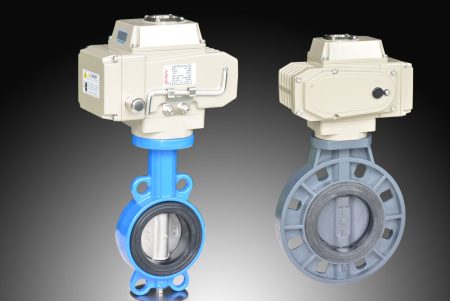
Applications of wafer valve vs butterfly valve
wafer valve vs butterfly valve are widely used across various industries due to their effective fluid control capabilities, each finding its niche in different applications. Wafer valves, particularly wafer check valves, are predominantly employed in systems where preventing backflow is essential. For instance, they’re commonly used in water supply networks to prevent the reverse flow of potentially contaminated water back into the clean water supply. They’re also utilized in heating and cooling systems to maintain consistent directional flow and prevent damage or inefficiency caused by reverse flow.
The compact design of wafer valves makes them particularly suitable for installations where space is limited, such as aboard ships or in densely packed industrial process systems. Their simple, lightweight construction also makes them a popular choice for high-volume manufacturing processes, where large numbers of valves may be required.
Butterfly valves, on the other hand, are versatile devices that find use in a wide range of applications. They’re often used in water distribution and wastewater treatment plants due to their ability to control large volumes of water quickly and efficiently. The quick operation of butterfly valves also makes them ideal for use in fire protection systems, where rapid shut-off can be crucial. In industrial processes, butterfly valves are utilized to control the flow of a wide variety of fluids, including oils, gases, steam, and even certain corrosive or abrasive materials. Lug-style butterfly valves, in particular, are beneficial in situations where regular maintenance is required, as they can be removed from the system without having to disrupt the entire line.
In conclusion, both wafer and butterfly valves play vital roles in various industries, with their specific applications dictated by their unique characteristics, the requirements of the system, and the nature of the fluid being controlled.
Common industries and systems where wafer valves are used.
Wafer valves, especially wafer check valves, are commonly used in a variety of industries and systems due to their effective backflow prevention capabilities. In the water supply industry, they’re often employed to prevent the reverse flow of potentially contaminated water back into the clean water supply. Similarly, in wastewater treatment plants, wafer valves ensure that treated water doesn’t flow back into the untreated section. They’re also used extensively in heating, ventilation, and air conditioning (HVAC) systems to maintain consistent directional flow and prevent inefficiencies or potential damage caused by reverse flow.
The oil and gas industry utilizes wafer valves in pipelines to prevent the backflow of oil or gas, which could lead to operational issues or safety concerns. In the power generation industry, these valves are used in both traditional thermal power plants and renewable energy systems like solar thermal plants to control fluid flow and prevent backflow. The maritime industry also favors wafer valves due to their compact and lightweight design, which is ideal for the space-constrained environments of ships and offshore platforms. Finally, in manufacturing processes, particularly those involving high-volume fluid handling, wafer valves are a popular choice due to their efficient operation and cost-effectiveness.
Common industries and systems where butterfly valves are used.
Butterfly valves are versatile and efficient, making them a popular choice across a wide range of industries and systems. They are commonly used in water distribution and wastewater treatment facilities due to their ability to control large volumes of water quickly and efficiently. The quick operation of butterfly valves also makes them ideal for use in fire protection systems, where rapid shut-off can be crucial. In the oil and gas industry, butterfly valves are often used in pipelines for the transportation of oil, gas, or other fluids due to their robustness and effective flow control capabilities.
In the chemical and pharmaceutical industries, butterfly valves are utilized to control the flow of various chemicals, including corrosive or abrasive substances, during manufacturing processes. Lug-style butterfly valves, in particular, are advantageous in situations where regular maintenance is required, as they can be removed from the system without having to disrupt the entire line.
Butterfly valves are also prevalent in the food and beverage industry, where they’re used in processing systems to control the flow of liquids like milk, beer, or juices. Their ease of cleaning and ability to maintain a sanitary environment make them an excellent choice for these applications. Finally, in HVAC systems, butterfly valves are used for controlling the flow of heating and cooling mediums, contributing to the efficient operation of these systems.
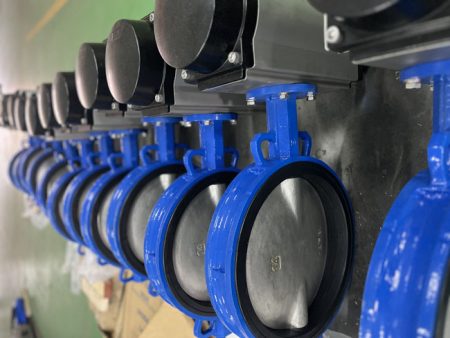
Examples of specific applications for both types of valves.
Both wafer valve vs butterfly valve find specific applications across various industries, owing to their unique characteristics. For instance, wafer check valves are frequently used in cooling systems of power plants. Here, they prevent the backflow of cooling water, ensuring the efficient operation of the system. They also find application in pump systems, where they prevent the reverse flow of fluid when the pump is turned off, protecting the pump from potential damage.
Butterfly valves, on the other hand, are commonly found in large-scale water distribution systems, like municipal water treatment plants. Here, they help control the flow of large volumes of water quickly and efficiently. In the oil and gas industry, butterfly valves are used in tanker trucks for loading and unloading operations due to their quick operation and efficient flow control capabilities.
In the food and beverage industry, butterfly valves are often used in fermentation tanks in breweries. Here, they control the flow of beer during the brewing process and ensure a sanitary environment due to their easy-to-clean design. Another specific application of butterfly valves is in HVAC systems, where they’re used to modulate the flow of heating or cooling mediums, contributing to energy efficiency and comfort in buildings.
Conclusion
In conclusion, understanding the differences between wafer valve vs lug butterfly valve and their applications is crucial for making informed decisions in various industries. Both types of valves play significant roles in controlling fluid flow, but they do so in different ways and are thus suited to different applications.
Wafer valves, especially wafer check valves, excel at preventing backflow, making them ideal for systems where reverse flow could cause damage or contamination. Their compact and lightweight design makes them a perfect fit for installations where space is a constraint. They are commonly used in water supply networks, cooling systems, heating systems, and high-volume manufacturing processes.
Butterfly valves, on the other hand, offer quick operation and efficient control of large volumes of fluid. They’re often used in water distribution, wastewater treatment, fire protection, and industrial process systems. Lug-style butterfly valves are particularly useful in systems that require regular maintenance or in situations where the valve may need to be removed without disrupting the entire line.
When it comes to performance, durability, and cost, both types of valves have their advantages. While wafer valves are generally more cost-effective due to their simpler design, butterfly valves offer greater versatility and can be more cost-effective in the long run, especially in applications requiring quick operation or the ability to handle large volumes of fluid.
However, the final decision on which valve to use will depend on the specific needs of the application, the operational environment, and the budget available. By understanding these differences and applications, engineers, project managers, and other stakeholders can make better decisions that enhance efficiency, ensure safety, and optimize costs in their respective operations.
So, whether you’re working on a water supply system, an HVAC system, an industrial process line, or any other application involving fluid control, you now have a better understanding of whether a wafer or butterfly valve might be the best choice for your needs. As always, it’s important to consult with a knowledgeable supplier or engineer to ensure that the chosen valve will meet all your requirements and provide reliable, long-lasting service.
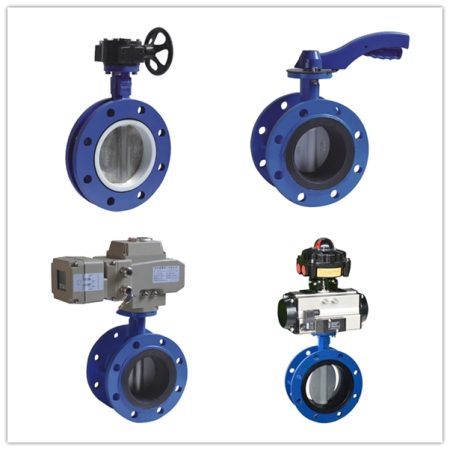
Recap of the key differences between wafer valve vs butterfly valve
In recap, wafer valve vs butterfly valve are both integral components in fluid control systems, but they have distinct differences. Wafer valves, particularly wafer check valves, are known for their ability to prevent backflow, making them ideal for systems where reverse flow could lead to contamination or damage. Their compact design makes them suitable for installations where space is limited. On the other hand, butterfly valves offer quick operation and efficient control of large volumes of fluid, making them preferable in systems like water distribution, wastewater treatment, and fire protection. Lug-style butterfly valves stand out for their unique ability to be removed without disrupting the entire line, making them ideal for systems that require regular maintenance. The choice between these two types of valves ultimately depends on the specific requirements of the application, the operational environment, and the budget available.


